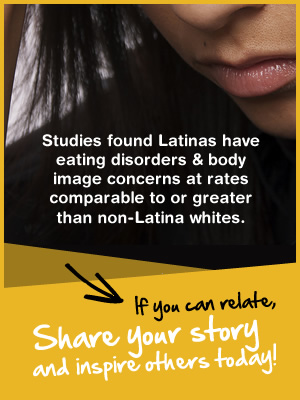
Our mental health crashed in 2020. Recovery could take years
07/29/2021 06:00AM | 2206 viewsJames was first diagnosed with depression in 2017. Life was a struggle for much of his mid-20s, and hiding in bed provided the only source of comfort. It took three years of medication, therapy and strenuous lifestyle changes, but James began to recover as 2019 came to a close. "For the first time in a long time," he said, "I began to feel hopeful about the future." Then COVID-19 hit.
Since March of last year, coronavirus torments have assaulted the 28-year-old's mental health. He became overwhelmed by anxiety over the prospect of infecting at-risk friends or one of his grandparents, who had cancer. Then, as lockdowns continued, that anxiety gave way to numbing isolation.
A software engineer, James was thankfully able to do his job from home. But sitting alone in front of lines of code made him feel empty. To overcome depression in the past, James had forced himself to socialize and go out into the world to try new things. Neither has been an option for most of the past year.
"COVID restrictions are the exact opposite of the things my therapist told me to do to recover," he said. "I didn't want all the time spent trying to recover from depression being for nothing."
James lives in Oxford, England, but his story of battling loneliness and mental health issues is universal. The coronavirus pandemic has wrought mental health havoc across the world. "As the pandemic struck, there was a large and immediate decline in mental health in many countries worldwide," reads the 2021 World Happiness Report. Mental health improved after the initial shock but, the report cautions, "a significant proportion of people had mental health [in 2020] that was persistently and significantly lower than before COVID-19."
In the US, 42% of respondents to a CDC survey in December reported anxiety or depression symptoms, an increase of over 200% from the 2019 average. In the UK, 31% of respondents to a September study reported depression severe enough to justify "high-intensity psychological support."
"It's affected [at least] a third of the population globally," said Luana Marques, an associate professor of psychology at the Harvard Medical School who's been tracking mental health in the pandemic. "Imagine if we were saying a third of the population had pneumonia. We would be alarmed. We need to think about mental illness as a brain health problem. We've got to be alarmed."
The pandemic has aggrieved mental health in three main ways. First, people experience anxiety around catching the virus themselves, or unknowingly carrying it and infecting others. Second, the social isolation caused by lockdowns leaves them lonely and desolate. James experienced both, but was spared from the other main hit: severe financial pressure. Employment is closely tied to wellbeing. One study of recessions and mental health showed that suicides in the US increased by 1% for every 1% rise in unemployment.
Different nations have shouldered these burdens in different ways. Japan has seen an alarming spate of suicides, particularly among women. Over 2,150 Japanese died by suicide in October, more than had died from COVID-19 by that point, leading to the creation of a minister for loneliness in the country. Suicide has not accelerated appreciably in most other countries, but other signs of despair have. Drug overdoses in the US spiked sharply, thanks mostly to rising opioid abuse, according to CDC data. Over 52,000 died by overdosing synthetic opioids between August 2019 and August 2020, the highest on record, with especially high numbers seen in the months following lockdown. When overdose deaths from the calendar year of 2020 are compiled, it's likely to be the worst on record.
There is some reason for optimism. As more people get vaccinated, economies recover and the prospect of post-COVID life becomes more tangible, some mental health metrics are improving. But we're not on the other side just yet. More precipitous falls in mental health have been avoided thanks to financial safety nets, like historic stimulus packages under both the Trump and Biden administrations. But Biden hasn't committed to a fourth stimulus package, and many more impromptu welfare systems, like the UK's furloughs scheme, will be removed by the end of the year.
And while available data shows escalated emotional suffering in populations around the world, the true mental and emotional fallout from COVID-19 is likely to play out over years -- or even decades.
Disparities in despair
Researchers around the world have been following mental health trends during the pandemic, and many are alarmed by what they find. Depression and anxiety incidence have doubled in the US, from 20% to 40%, according to CDC data. Statistics are similar in other countries developed enough to collect such data.
Yet the figures don't tell the whole story. It's not simply that mental well being has declined precipitously across the population. Rather, particular demographics have been hit particularly hard. There are three groups often distinguished by experts: women, the poor and young people.
Researchers at Harvard University following 224 children, aged 7 to 15, found that 66% showed clinically significant signs of depression or anxiety, over double the 30% rate from the prior year. Other countries ravaged by the pandemic report similar issues. In France, which has gone into three national lockdowns, depression among those aged 18 to 24 nearly doubled from April to November. In China, a survey of adolescents found a 50% rise in depression.
There are many contributing factors, but loneliness brought on by school closures is thought to be the principle one. In populous US states like New York and California, many students have been learning remotely for over a year. In the UK, where a record number of young people are seeking mental health services, schools were closed, reopened and then closed again as a second wave of the virus hit.
Lockdowns affect everyone. James was gutted to be isolated from the friends and hobbies that had pulled him out of depression before the pandemic, but he was able to pick up new interests like playing guitar, home brewing and baking. And though the isolation is hard, it's even harder for developing minds.
"For young people, peer relationships are much more important, you can demonstrate that on [brain] scans, they're much more susceptible to peer exclusion," said Ann John, a professor of public health and psychology at Swansea University in the UK. "With loneliness, what most research shows is that it's the length of experience of feeling lonely [that's damaging] rather than short-sharp experiences, and for many young people it has been a long time."
The same school closures besetting young people are affecting another disproportionately impacted group: their mothers. One survey by CARE International found that women have experienced mental health hardships at a rate of almost 3:1 compared with men during the pandemic. Millions of women have been confronted with the choice of either maintaining their jobs or caring for children unable to attend school, resulting in 2.3 million US women dropping out of the workforce altogether compared with 1.8 million men. Women's workforce participation is at its lowest level since 1988, according to the National Women's Law Center.
Because women predominate in industries ravaged by the pandemic -- hospitality, travel and retail -- their unemployment rate is also higher. This has had a particularly striking effect in India, where only 7% of urban women hold a paid job or are looking for one.
Unfortunately, these economic figures set the stage for even more serious emotional hardships. The first month of the pandemic saw domestic violence rise 25% in Argentina, 33% in Singapore, and 300% in Hubei, China, according to United Nations Women. The ensuing lockdowns have made data difficult to collect in countries like the US and UK, but numbers are thought to have sharply increased around the world. In Japan, there were 132,355 cases of reported domestic violence between April and November, an all-time high.
The tolls of familial burdens have weighed enormously on women in Japan. Suicide among women spiked nearly 15% in 2020.
Depression and despair
Suicide rates have steadily increased in the US since 1999, so when the pandemic hit, mental health experts braced for the worst. Miraculously, no such rise appears to have occurred. Japan seems to be anomalous. Suicidal ideation is on the rise among young people, said Harvard Medical School's Marques, but actual deaths by suicide are mostly flat.
"What we're seeing, up until October is that there was no evidence of an increase, and sometimes there's evidence of a decrease," said Swansea's John. But suicides are just one type of metric used to measure a population's mental health. In others, particularly drug abuse, America is clearly struggling.
As a research fellow at the Brookings Institute and a senior scientist at Gallup, Carol Graham has spent much of her career studying happiness. When considering how mental health affects a society, Graham thinks in terms of what's classified as "despair." Despair is measured in three key ways: suicide, alcohol poisoning and substance abuse.
Though suicides haven't risen dramatically, Graham estimates that "deaths of despair" have gone up between 50% and 100% in the past year.
"We had about 70,000 deaths of despair in the year prior to COVID, due to suicide overdose and other mental issues, based on first-responder data," Graham said. "Suicide hasn't increased that much, and I'm not sure we know why. But what has increased a lot are overdoses and mental and behavioral health reports."
Graham says first-responder data, used until CDC releases its own more conclusive data, suggests an excess of between 30,000 and 60,000 deaths of despair in the past year.
"These aren't COVID deaths, they're deaths due to the increased despair that the virus has introduced," Graham explains. "Some of that is economic, some of it is the uncertainty, some of it is fear of getting the virus, loneliness is a big contributor to it, there are a whole range of things."
Linking mental health woes to alcohol and substance abuse alongside suicide highlights America's other epidemic: the opioid crisis, from which the majority of "deaths of despair" come. Compared to the same months in 2019, suspected overdoses rose 29% in April and 42% in May, reports the Overdose Mapping Application Program. Over 52,000 people died between August 2019 and 2020 from synthetic opioids, mostly fentanyl, an all-time high, according to CDC data.
Rises in drug and alcohol abuse are not exclusive to the US. The Canadian province of Ontario saw a 60% rise in opioid-related overdose deaths in the first 11 months of 2020, reports the Globe and Mail. In South Korea, which has a zero-tolerance policy on drugs, alcohol consumption reached record heights in 2020.
In the US, though COVID-19 has objectively hit minority communities harder, with Blacks and Hispanics more likely to have contracted the virus or lost a job as a result of it, poor whites have seen more deaths of despair than any other group, says Graham. The group has the highest rates for opioid overdoses and suicides.
"There's no reason poor whites should report more pain than poor Blacks. There's objectively no reason," Graham points out, "but poor Blacks are still much more optimistic and report better mental health than poor whites."
Regardless of race, the poor and underprivileged bear a large part of the brunt. Professor John worries this trend will be made worse as governments end the enhanced welfare programs enacted when lockdowns began.
"There's always a socioeconomic gradient," John said, adding that mental health "is closely associated with unemployment and in all countries there's been lots of government safety nets."
"Those are all going to gradually disappear."
The long view
What researchers now know about mental health in the COVID era is a snapshot, and it'll take years before its impacts can be properly measured.
Partially, that's because effects can linger. As the pandemic drags on researchers are learning more about "long COVID," in which symptoms from the virus persist long after a victim contracted it. Those who suffer from long COVID can experience issues in their respiratory, cardiovascular and gastrointestinal systems, according to an April paper in Nature. It's also associated with less sleep and more anxiety. Research from Britain's National Institute of Health suggests that at least 50% of people admitted to hospital for COVID-19 were still enduring symptoms two months later.
Then there's post-traumatic stress disorder. Marques points out that 12% of first responders to 9/11 still had clinical symptoms of PTSD in 2011, a decade later. A full third of patients treated for SARS, another coronavirus, went on to develop PTSD symptoms, according to a 2005 study from Hong Kong University. Seeing the syndrome in the same percentage of people treated for COVID-19 would be a colossal issue alone.
The third long-term worry is that emotional problems often don't manifest for years until after the traumatic incident. Marques points out that many people living through the pandemic are in perpetual survival mode and that symptoms of trauma may not manifest until after the virus recedes, when they feel safe. "My hypothesis is that we'll see a shift in the prevalence of mental illness, and it's going to stay that way for a while," she said.
Swansea's John adds this is a particular worry among young people, as emotional issues that develop as a teenager sometimes only surface as an adult. Once schools and universities are open again, John says, they need to put an emphasis on connection and wellbeing in addition to academic catchup. Both John and Graham point to the value of civic institutions like libraries or local debate teams, which create a sense of community.
Moves like that would help people like James, who rely on those opportunities to overcome dark days. "I'm worried that even after lockdown, things like local meetup groups will be rarer," he said. "The things we had in place that helped young people meet new friends have been effected and will need a lot of time to build back to what they were."
Though concerned, John is cautiously optimistic. COVID-19 has accelerated many preexisting trends, like shifts to remote work and online activity, and she thinks that energy devoted to mental health will be another.
One positive sign is that online therapy sessions through video chat have become far more common. It's not just that people have gone from the therapist chair to the lounge room, but rather "underserved and underrepresented" groups that normally shun in-person therapy feel comfortable opting for online therapy done from their own home. More people than ever are experiencing mental health issues, and John hopes governments will be more incentivized to supply services to meet that demand.
"Lots of people who'd never experienced mental health difficulties or loneliness -- the pandemic has opened people's eyes to what these things feel like," she said. "When I was doing research 10 years ago into mental health and suicide, no one was interested. Now people want to know. And if people want to know, the government doing something about it is much more likely."
Graham echoes this sentiment, noting that the US Department of Labor, Centers for Disease Control and Prevention, Census Bureau and other agencies are now including wellbeing metrics in data collection. "People really are interested now in trying to pull mental health in as a big issue," she said. "Why it took COVID to do it, I don't know."
She recommends a federal task force to help existing bureaucracies coordinate on US wellbeing. Encouraging hope, Graham said, is the goal. People who are hopeful, rather than filled with despair, are more likely to invest in their future, have aspirations for higher education and to avoid risky behaviors. This was the case for James, who says a turning point of treatment for depression was when he started to believe he could have a good life in the future.
"This spark of hope is what I clung to," he said. As with millions of others, how James feels often changes from one day to the next. Some days he worries it's too late for him to build a life he can be proud of, especially with everything put on hold during the pandemic year. But on other days, that life feels within reach.
"2020 definitely caused a knockback in my newfound hopefulness but did not destroy it," he said. "Today I'm leaning on the more hopeful side. There's part of me that believes 2021 could be an amazing year."











Post your Comment
Please login or sign up to comment
Comments